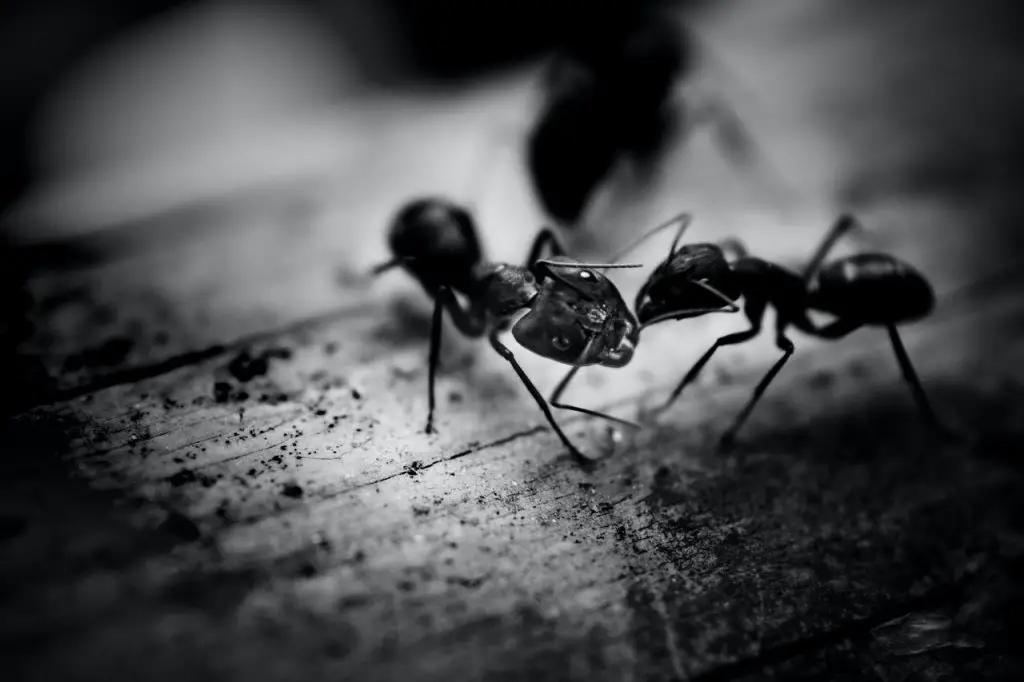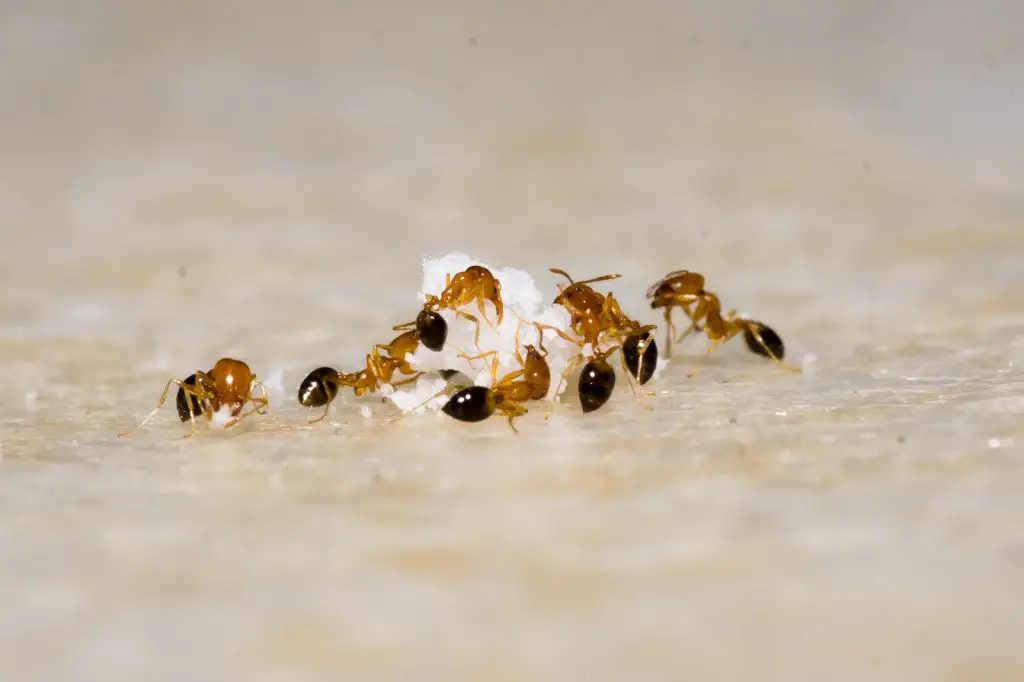Did you know that ants are engaged in a reproductive strategy which is called parthenogenesis
Ants do not have sex to produce offspring; instead, the queen ant produces a fertilized egg that develops into a new worker or soldier ant.
Ants have a unique social structure where only the queen is capable of mating, reproducing, and laying eggs.
Do ants lay eggs
Yes, the Queen ants lay eggs. Queens are females that were fed more as larvae.
Queens in some ant species can lay up to millions of eggs, which are tended to by the entire colony.
These queens are initially winged and take flight to mate. Ants work tirelessly to gather food to support the queen and her eggs.
After hatching, the eggs undergo a transformation into larvae, which have specific nutritional requirements.

The Fascinating Life Cycle of Ants
To understand the process of ant reproduction, it’s helpful to know the different stages of their life cycle.
The eggs, which are small and cream-coloured, are taken care of by the worker ants.
Ant larvae resemble grubs and have no legs. The pupae initially appear cream-coloured but darken as they mature into adult worker ants.
The adult ants are divided into two groups – older workers that forage for food and defend the colony, and younger nurse ants that care for the queen and the eggs, larvae, and pupae.
Queens are typically larger than other members of the colony.
Queen Ants role in reproduction
Queen ants have the ability to selectively fertilise the eggs they lay.
Fertilised eggs develop into infertile female worker ants, with larger individuals known as soldiers.
Unfertilized eggs, on the other hand, become fertile male ants known as drones. The sole purpose of drones is to mate with the queen and they die soon after fulfilling their role.

Male Ants role in reproduction
Male ants are like airborne sperm, and since they only have one copy of their genome, each of their sperms is genetically identical to themselves.
Their sole purpose is to reproduce, and after mating, they die quickly. However, their sperm can live on for many years. In essence, their only responsibility is reproduction.
Workers role in reproduction
Despite the fact that worker ants are female, only the queen has the ability to lay eggs.
Ants possess complex social structures with three distinct castes: queens, males, and workers.
While the workers are female, they cannot reproduce. The majority of eggs laid by the queen develop into worker ants.
how many eggs do ants lay per day
Each day, a queen ant can lay up to 800 eggs, resulting in a colony of over 200,000 ants that includes male and female reproductive stages. These winged ants stay in the colony until the time is right for their mating flight.
Following mating, female ants discard their wings and seek out suitable locations to establish a fresh colony. They then deposit eggs in the new habitat and nourish the larvae until they emerge as the colony’s initial batch.
Types of Ant eggs
Ants lay different types of eggs depending on the specific species.
In general, there are two main types of ant eggs – fertilized and unfertilized.
Fertilized eggs develop into female ants, while unfertilized eggs become male ants.
However, some species may have additional egg types, such as soldier ant eggs, that develop into larger worker ants with specialized defensive functions.
Where do Ants lay their eggs
The only ant which can lay eggs is the queen ant.
Males will mate with the queen ant and the queen ant lays the eggs within a special chamber inside the ant nest.
Usually, the queen ant has the colonies built around them and they are the centre of most of the activity around the colony. Queens can lay thousands of eggs over time.
Ants Eggs Development Process
Ants experience complete metamorphosis, which involves four distinct stages: egg, larva, pupa, and adult.
The first stage of an ant’s life cycle is the egg stage, where eggs are small, oval-shaped, and soft, about the size of a period.
After hatching, the ant transforms into a worm-like larva that lacks eyes or legs but feeds voraciously with the help of adult ants.
As they eat and grow, larvae moult between sizes. When a larva reaches a certain size, it enters the pupa stage, undergoing significant changes before emerging as an adult ant.
After the pupa stage, the ant emerges as a fully grown adult. Newly emerged adults may have a lighter colour than older ants but darken with age.
The duration of development from egg to adult varies depending on the species and the environment, ranging from several weeks to several months.
Conclusion
In conclusion, ants have a unique and fascinating reproductive process, where only the queen ant is capable of mating and laying eggs.
The eggs undergo a complete metamorphosis, passing through four distinct stages before becoming fully grown adult ants.
While workers play an essential role in caring for the queen and her eggs, they cannot reproduce themselves.
Ants lay different types of eggs depending on the species, with fertilised eggs developing into female ants and unfertilized eggs becoming male ants.
The intricate social structures and reproductive strategies of ants make them one of the most interesting and successful species on the planet.



